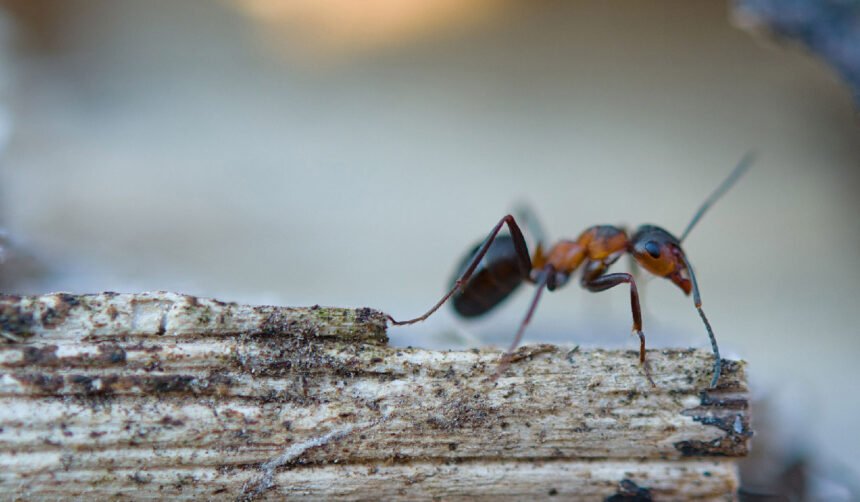No one expects a trail of tiny invaders to turn into a full-scale household crisis. Yet every year, countless homeowners and business owners find themselves battling ant infestations that appear out of nowhere and refuse to go away. These persistent pests aren’t just annoying—they can contaminate food, damage property, and, in some cases, pose health risks.
Ants may be small, but they are relentless. From kitchens to office break rooms, from gardens to industrial spaces, these insects are capable of infiltrating nearly any environment in search of food and shelter. And once they establish a trail or colony, they return time and time again—unless proper action is taken.
This is where ant control becomes not just a solution but a necessity. In this comprehensive guide, we’ll explore why ants are such formidable pests, how infestations develop, and most importantly, how to implement effective strategies to keep them at bay for good.
Why Ants Are Such a Common Problem
There are over 12,000 species of ants worldwide, and while only a handful are known for invading human spaces, those few species are persistent and adaptable. Ants live in colonies that can range from a few dozen to hundreds of thousands of individuals. Each ant plays a specific role—workers, soldiers, queens—and their highly organized structure makes them difficult to eliminate.
Ants are attracted to environments that offer:
- Food sources: Especially sweet, greasy, or protein-rich items.
- Moisture: Leaky faucets, humid basements, and pet water bowls are ideal.
- Shelter: Wall voids, cracks in foundations, or beneath floors.
Once an ant finds food, it releases pheromones to lead others to the source. That’s why you may notice a single scout ant one day, and a full-blown trail the next.
The Life Cycle and Behavior of Ants
Understanding how ants live and behave is key to effective ant control. Ant colonies consist of:
- Queens, whose sole job is to reproduce
- Males, who mate with queens and die soon after
- Workers, who forage for food, care for young, and protect the nest
Ants typically build nests underground, in wall cavities, beneath concrete slabs, or inside wood. Some species, like carpenter ants, are particularly destructive because they tunnel into wood to build their nests—posing a threat to building structures.
Most ant species prefer to stay hidden, coming out only when necessary. That means by the time you see ants in the open, the colony is likely already well established.
Types of Ants That Commonly Infest Structures
There are several types of ants commonly found in and around homes or commercial buildings, including:
- Odorous House Ants: Named for the unpleasant smell they release when crushed.
- Carpenter Ants: Known for burrowing into wood, often causing structural damage.
- Pavement Ants: Typically nest under driveways or sidewalks but enter buildings for food.
- Pharaoh Ants: Difficult to control and can spread disease.
- Argentine Ants: Highly aggressive, forming super-colonies that drive out other species.
Each type requires a different approach for treatment and prevention, making it important to correctly identify the species before implementing a strategy.
Why DIY Solutions Often Fall Short
Walk down the pest control aisle of any store, and you’ll find a wide range of sprays, gels, traps, and baits promising instant results. While these can be helpful for small issues, most infestations go deeper than surface-level treatment.
Here’s why many do-it-yourself methods fail:
1. Only Targeting Visible Ants
Surface sprays and traps kill foraging ants, not the colony. The queen, who continues to reproduce, remains untouched.
2. Incorrect Baiting
Different ant species are attracted to different types of bait—sweet, greasy, or protein-based. Using the wrong bait can render efforts useless.
3. Temporary Relief
Ants may disappear for a few days but return in full force once the bait or spray wears off.
4. Misidentifying the Species
Treating the wrong species with the wrong product or method will not solve the root of the problem.
That’s why professional ant control services are often necessary for long-term success.
What Professional Ant Control Involves
Effective pest management goes beyond a one-time treatment. Professionals take a strategic approach that includes:
✅ Inspection and Identification
Trained technicians begin by identifying the species and locating the nest. This may involve checking inside walls, under appliances, or around the exterior perimeter of the building.
✅ Customized Treatment Plan
Once the source is located, a customized treatment plan is developed. This may include:
- Gel bait placement near trails
- Dust insecticides in voids and entry points
- Non-repellent sprays around the foundation
- Nest elimination if accessible
✅ Monitoring and Prevention
After initial treatment, follow-ups may be scheduled to monitor progress and adjust strategies. Professionals will also identify conditions that contribute to infestations—like leaks, food sources, or landscaping issues.
✅ Education
Clients are advised on sanitation and maintenance practices that can prevent future outbreaks.
Preventing Ant Infestations
While professional help is often needed to eliminate a colony, property owners can take important steps to reduce the risk of future infestations:
- Seal Entry Points: Use caulk to close cracks and crevices around doors, windows, and foundations.
- Keep Surfaces Clean: Wipe down counters and floors to remove crumbs and spills.
- Store Food Properly: Use airtight containers and avoid leaving pet food out.
- Eliminate Moisture: Fix leaky pipes, use dehumidifiers, and maintain dry basements.
- Trim Vegetation: Keep plants and trees away from the structure to prevent ant highways.
- Empty Trash Regularly: Keep bins sealed and clean.
Consistency in these practices greatly reduces the chances of attracting ants.
Eco-Friendly and Non-Toxic Ant Control Options
For those concerned about using chemicals in their homes or near children and pets, many pest control professionals now offer eco-friendly alternatives. These may include:
- Natural baits made from boric acid or diatomaceous earth
- Essential oil sprays (e.g., peppermint, clove, or citrus)
- Non-toxic dusts for cracks and crevices
- Biological control agents, such as nematodes in outdoor areas
While these methods may take longer than traditional chemicals to produce results, they are effective when used correctly and consistently.
Signs You Need Professional Ant Control
If you’re unsure whether your ant problem is minor or serious, here are clear signs it’s time to call in the experts:
- Ants reappear despite your best efforts
- You see multiple trails throughout the house
- You’ve identified large black ants, possibly carpenter ants
- You hear rustling inside walls (yes, some species are that active)
- You find winged ants, which could indicate a mature colony
Delaying action may allow the colony to grow, causing more damage and making eradication more difficult.
Final Thoughts
Ants are incredibly efficient at finding food and shelter, and once they set up shop, getting rid of them becomes more than a weekend DIY project. They can damage property, contaminate food, and make daily life frustrating for home and business owners alike.
The good news is that with proactive strategies and professional ant control, these pests can be eliminated and prevented from returning. The key lies in identifying the species, eliminating the source, and making your environment less appealing to future colonies.
Remember: it’s not about killing the few ants you see—it’s about stopping the thousands you don’t.
For More Information, Visit Dotmagazine









